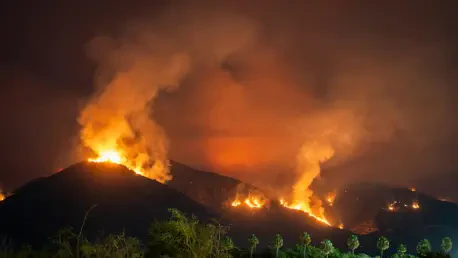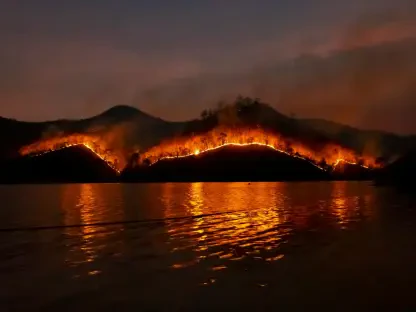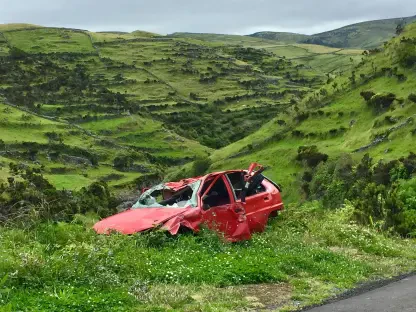In the vast, arid landscapes of the Western United States, wildfires have become an ever-looming threat, destroying thousands of homes and causing billions in damages each year. The recent Los Angeles wildfires, which razed over 57,000 acres and obliterated more than 18,000 structures, serve as a stark reminder of the escalating dangers faced by communities in these regions. As insured losses soar beyond expectations, the insurance industry struggles to keep pace, often leaving homeowners with unaffordable premiums or no coverage at all. Amid this crisis, a groundbreaking development offers hope: the integration of artificial intelligence (AI) into wildfire risk assessment and insurance underwriting. A notable advancement in this space comes from the strategic acquisition of a leading wildfire analytics firm by a tech-driven insurance innovator, promising to reshape how risk is evaluated and priced. This fusion of cutting-edge technology and industry expertise could herald a new era of accessibility and affordability for property insurance in high-risk zones.
Merging Technology and Expertise for Better Coverage
The union of advanced AI capabilities with insurance underwriting expertise marks a significant milestone for the industry, particularly in wildfire-prone areas of the West. A prominent property insurance company, known for its focus on catastrophe-exposed regions, has recently acquired a specialized firm renowned for its wildfire prediction models. This partnership aims to tackle the acute shortage of insurance options by leveraging AI to deliver precise, property-specific risk assessments. Unlike traditional models that often rely on generalized data, this combined approach integrates a vast array of variables updated daily, ensuring a more accurate evaluation of potential threats. The result is a platform capable of addressing the unique challenges faced by homeowners and insurance providers in regions where wildfires are a constant concern, potentially expanding coverage where it has long been scarce.
This technological synergy goes beyond mere risk prediction; it fundamentally changes how insurance products are priced and offered in vulnerable markets. By incorporating detailed data points such as building materials, vegetation proximity, and localized weather patterns, the AI-driven system offers risk evaluations at an unprecedented level of granularity. This allows for tailored pricing that reflects the true exposure of individual properties rather than applying broad, often punitive, risk categories. For insurance carriers and managing general agents, this means an opportunity to underwrite policies with greater confidence, knowing that the underlying data captures the nuances of wildfire threats. For homeowners, the promise lies in premiums that are more aligned with actual risk, potentially making coverage both accessible and sustainable in areas previously deemed uninsurable due to outdated assessment methods.
Addressing Market Gaps with Precision Analytics
The wildfire insurance crisis in the Western states stems largely from the inability of conventional models to provide the detailed insights needed for effective risk management. Many existing tools depend on outdated maps or generalized weather forecasts, leading to blanket assumptions that either inflate costs or exclude entire communities from coverage. In contrast, the newly integrated AI technology offers predictions at a resolution that captures hyper-local conditions, down to specific square footage. This level of detail enables insurers to distinguish between properties that are highly vulnerable and those with mitigating factors, fostering a more equitable distribution of risk. Such precision is crucial for rebuilding trust in the insurance market, especially in areas where homeowners have faced repeated denials or prohibitive pricing.
Moreover, the adoption of this AI-driven approach signals a broader industry shift toward data-centric solutions in the face of escalating natural disasters. As wildfires grow in frequency and severity due to climate change, the need for adaptive, forward-thinking strategies becomes undeniable. The collaboration between these two innovative companies highlights a commitment to not only assessing risk with greater accuracy but also incentivizing property-level resilience. By providing transparent risk evaluations, insurers can encourage homeowners to invest in protective measures, such as fire-resistant materials or defensible space, which could further reduce exposure. This dual focus on precision and prevention paves the way for a more stable insurance landscape, where coverage is not just a privilege for the few but a viable option for many in the wildfire-ravaged West.
Pioneering a Sustainable Future for Insurance
Looking back, the strides made through the integration of AI into wildfire risk insurance reflect a critical turning point for communities grappling with environmental uncertainty. The partnership between a forward-thinking insurance firm and a specialized analytics provider demonstrated how technology could bridge long-standing gaps in coverage, offering a lifeline to homeowners in the Western United States. Their combined efforts underscored the power of granular data and machine learning to transform underwriting practices, ensuring that risk was neither overestimated nor underestimated but evaluated with pinpoint accuracy.
Moving forward, the focus must shift to scaling these innovations to reach even more vulnerable areas while continuing to refine predictive models with real-time data. Stakeholders across the insurance ecosystem, from carriers to policymakers, should prioritize collaboration with tech pioneers to develop frameworks that support both affordability and resilience. Additionally, educating homeowners about the benefits of AI-informed insurance and the importance of mitigation strategies will be key to fostering a culture of preparedness. As the industry builds on these advancements, the ultimate goal remains clear: to create a sustainable model where protection against wildfires is not a luxury but a fundamental safeguard for all.









